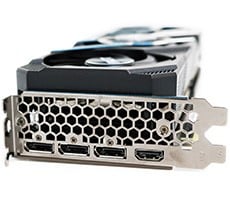NVIDIA GeForce 7800 GTX
|
| Thanks to the dedication of hardcore PC gamers and a huge mod-community, the original Half-Life became one of the most successful first person shooters of all time. So, when Valve announced Half-Life 2 was close to completion in mid-2003, gamers the world over sat in eager anticipation. Unfortunately, thanks to a compromised internal network, the theft of a portion of the game's source code, and a tumultuous relationship with the game's distributor, Vivendi Universal, we all had to wait until November 2004 to get our hands on this classic. We benchmarked Half-Life 2 with a long, custom-recorded timedemo in the "Canals" map, that takes us through both outdoor and indoor environments. These tests were run at resolutions of 1,280 x 1,024 and 1,600 x 1,200 without any anti-aliasing or anisotropic filtering and with 4X anti-aliasing and 16X anisotropic filtering enabled concurrently. |


What a difference a few months, and a couple of driver revisions can make. Our custom Half-Life 2 benchmark had historically been dominated by ATI hardware. And if you only focus on the performance of the GeForce 6 Series versus the Radeon X8x0s, that would still be the case. But with the introduction of the GeForce 7800 GTX, NVIDIA now has a clear performance advantage over ATI in Half-Life 2. The GeForce 7800 GTX put up numbers that were up to 82% faster than any other configuration in this test. A pair of GeForce 7800 GTX cards running in SLI mode further solidified NVIDIA's position, outpacing the best ATI currently has to offer by up to 60%. And again, the 7800 GTX SLI rig was CPU limited here, even at a resolution of 1,600 x 1,200 with 4XAA and 16X anisotropic filtering enabled.







